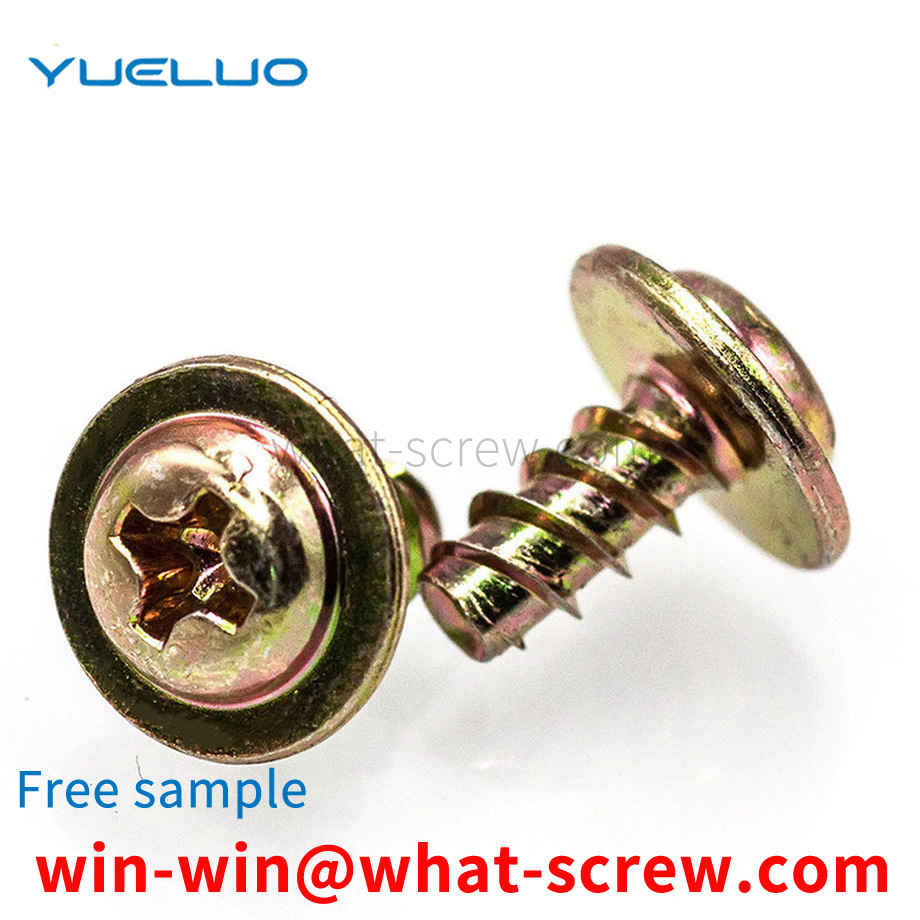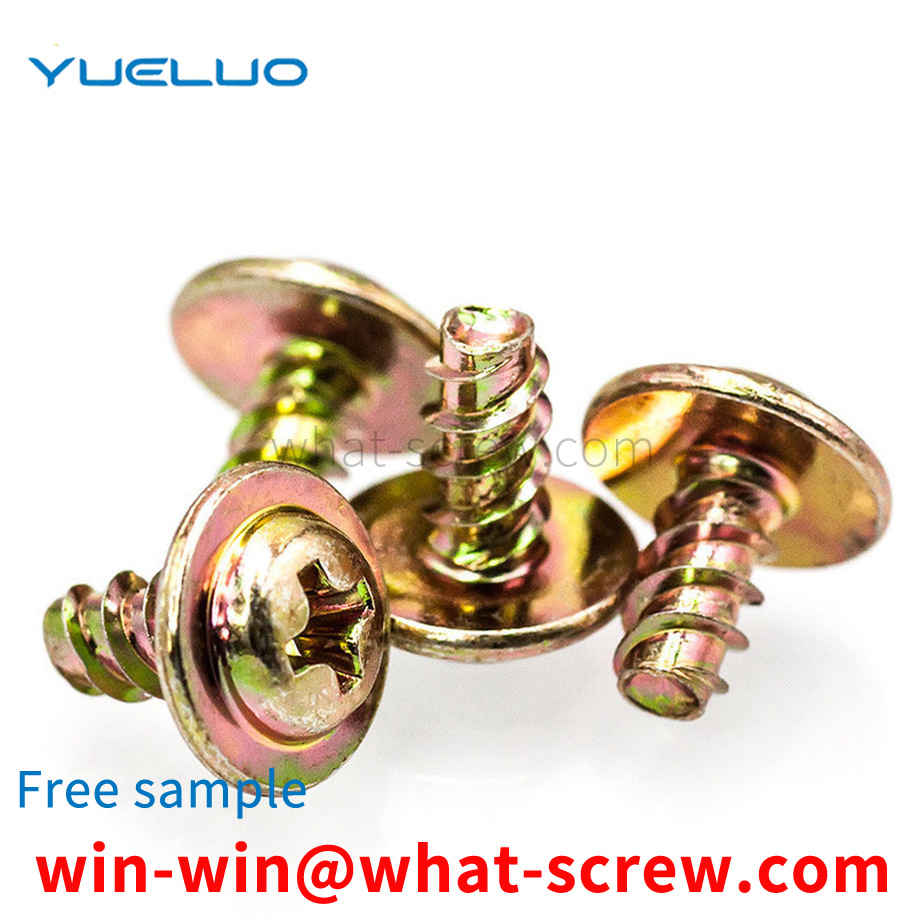Several concepts about high-strength bolts 1. According to the specified performance level of bolts above 8.8, they are called high-strength bolts. The current national standard only lists M39. For large-size specifications, especially those with a length greater than 10 to 15 times High-strength bolts, domestic production is still short-term. The difference between high-strength bolts and ordinary bolts: High-strength bolts can withstand larger loads than ordinary bolts of the same specification. High-strength outer hexagon bolts High-strength outer hexagon bolts are made of Q235 (ie A3). The material of high-strength bolts is 35# steel or other high-quality materials, which are heat-treated after being made to improve the strength. The difference between the two is the difference in material strength. From raw materials: High-strength bolts are made of high-strength materials. The screws, nuts and washers of high-strength bolts are all made of high-strength steel, such as No. 45 steel, 40 boron steel, 20 manganese titanium boron steel, 35CrMoA, etc. Ordinary bolts are usually made of Q235 (equivalent to A3 in the past) steel. In terms of strength grades: high-strength bolts are increasingly used. Two strength grades are commonly used, 8.8s and 10.9s, of which 10.9 is the majority. The strength level of ordinary bolts is lower, generally 4.4, 4.8, 5.6 and 8.8. High-strength bolts High-strength bolts are viewed from the force characteristics: high-strength bolts apply pretension and transmit external forces by friction. Ordinary bolt connection relies on the shear resistance of the bolt and the bearing of the hole wall to transmit the shear force. When the nut is tightened, the pre-pressure is very small, and its influence can be ignored. In addition to its high material strength, high-strength bolts also exert a large amount of pressure on the bolts. The pre-pressure generates extrusion force between the connecting components, so that there is a large friction force perpendicular to the direction of the screw, and the pre-pressure, anti-slip coefficient and steel type directly affect the bearing capacity of high-strength bolts. According to the force characteristics, it is divided into pressure type and friction type. The calculation methods of the two are different. The minimum specification of high-strength bolts is M12, and M16~M30 are commonly used. The performance of super-large bolts is unstable and should be used with caution in design.
According to relevant standards, the performance grades of carbon steel and alloy steel bolts are divided into more than 10 grades such as 3.6, 4.6, 4.8, 5.6, 6.8, 8.8, 9.8, 10.9, 12.9, etc. Among them, the bolts of grade 8.8 and above are made of low-carbon alloy steel or medium Carbon steel and heat treatment (quenching, tempering) are generally called high-strength bolts, and the rest are generally called ordinary bolts. The bolt performance grade label consists of two parts of numbers, which represent the nominal tensile strength value and yield ratio of the bolt material respectively. Stainless steel bolts are divided into A1-50, A1-70, A1-80, A2-50, A2-70, A2-80, A3-50, A3-70, A3-80, A4-50, A4-70, A4-80, A5-50, A5-70, A5-80, C1-50, C1-70, C1-110, C4-50, C4-70, C3-80, F1-45, F1- 60. The first letter and number represent the stainless steel group, and the second and third numbers represent 1/10 of the tensile strength. [2]
At present, the industry uses the pure manual installation method to install the elastic cylindrical pin, that is, the staff first holds the tool holder; then, manually puts the elastic cylindrical pin into the elastic cylindrical pin hole of the tool holder; then, use the body to align the tool holder For positioning, use a hammer to knock the elastic cylindrical pin into the tool holder. This installation method requires manual operation throughout the entire process, and the work efficiency is low. Moreover, when the hammer is knocked, the staff needs to use the body to position the tool holder, there is a risk of smashing and injuring people, and there is a potential safety hazard. In addition, hammering will cause deformation of the elastic cylindrical pin, and the qualification rate of assembly is low.
The production process of rivet nuts is basically similar to that of other screws. It's just that the screws are punched out with a screw pier, and the nuts are punched out with a nut pier. Introduce the production process of rivet nuts. 1. First, it is necessary to determine what material and material the rivet nut is, so that we can use what material to produce and what material to use. Knowing what materials and materials are used, we can buy screw wires. 2. Determine the size and length of the rivet nut. This is the best way to use a large screw wire. 3. After determining the material, material, size and type, we need to see if it is a commonly used rivet nut. If so, there must be a corresponding mold in the factory. If not, it is non-standard, then we have to order molds. 4. After everything is ready for production, it is necessary to use the nut machine to punch out the shape of the rivet nut, that is, the appearance. 5. After the pier is punched out, use the machine for tapping the nut teeth to tap it. 6. After the thread is tapped, electroplating is performed. The stainless steel rivet nut does not need electroplating, it only needs to be cleaned. If you want to electroplate other colors, you have to take it to a professional electroplating manufacturer for electroplating treatment.
In another embodiment of Guangdong Yueluo Hardware Industry Co., Ltd., the discharge port of the vibrating plate 2 is matched with the screw receiving hole 35, and the screws can enter the screw receiving hole 35 through the discharge port after sorting and sorting in the vibrating plate 2. . Preferably, a guide rail 6 is provided between the discharge port of the vibrating plate 2 and the screw accommodating hole 35 , and the screws enter the screw accommodating hole 43 from the discharge port through the guide rail 6 . The slotting is carried out, which improves the efficiency and saves the labor cost.
We have many years of experience in the production and sales of screws, nuts, flat washers, etc. The main products are: 10.9 hexagon socket head countersunk nuts, rivets, DIN988 washers, butterfly nuts and other products, we can provide you with suitable fastening for you piece solution.



















 Service Hotline
Service Hotline




